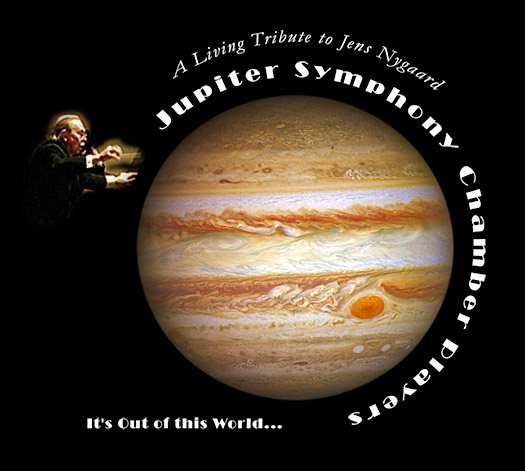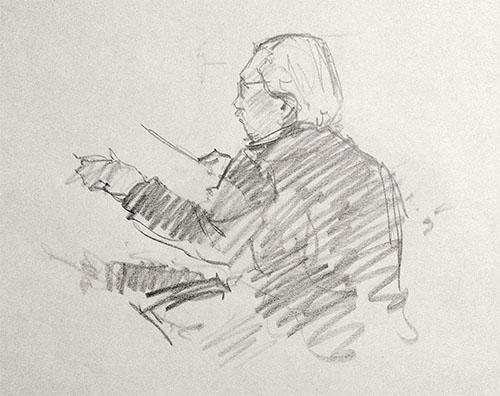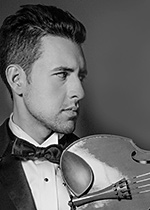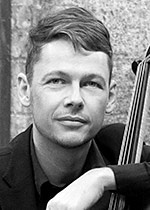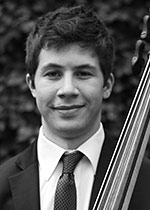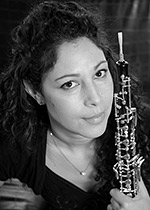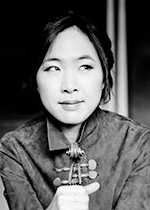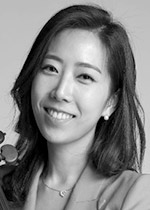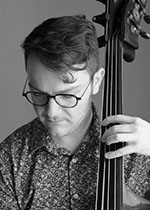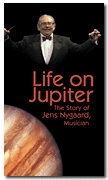Join us for our next concerts...
Monday, September 8 ♦ 2 PM & 7:30 PM
Fishy Waters
Good Shepherd Presbyterian Church
152 West 66 Street (west of Broadway)
Limited Seating
Tickets: $25, $17 ~ Reservations advised
Call (212) 799-1259 or email admin@jupitersymphony.com
Pay by check or cash (exact change)
Drew Petersen piano
Recipient of the 2018 Avery Fisher Career Grant and 2017 American Pianists Awards, 2015 Leeds (4th prize), Kosciuszko-Chopin competitions, Jan Gorbaty Award, and Artist-in-Residence at the University of Indianapolis ~ “Thrilling piano playing wedded to astute quite astonishing musicianship.” East Hampton Star
Njioma Grevious violin
Founding member of the Abeo Quartet ~ grand prizewinner of the 2023 Concert Artists Guild and Young Classical Artists Trust auditions, first prize at the 2023 Sphinx and 2018 Prix Ravel (France) competitions, and a fellowship from the Music Academy of the West to study with the London Symphony Orchestra in 2022 ~ described by the Chicago Classical Review as “a superb” talent
Paul Laraia viola
Winner of the 13th Lionel Tertis and 14th Sphinx competitions ~ “eloquent...vibrant” The Strad
Mihai Marica cello
Winner of the Irving Klein, Viña del Mar, Salon de
Virtuosi and Dotzauer competitions ~ “Mihai is a brilliant cellist and interpreter of music. His
playing is spellbinding.” Mitchell Sardou Klein
Gabriel Polinsky double bass
Associate Principal Bass of the Philadelphia Orchestra at age 23 ~ First Prize winner at the 2023 ARD competition in Munich, the 2019 Philadelphia Orchestra Allen Greenfield Competition, and fourth prize at the Irving Klein Competition
Sooyun Kim flute
Winner of the Georg Solti Foundation Career Grant and a top prize at the ARD flute competition, she has been praised for her “vivid tone colors” by the Oregonian and as a “rare virtuoso of the flute” by Libération
Roni Gal-Ed oboe
First Prize winner of the Lauschmann Oboe Competition in Mannheim ~ “Outstanding” The New York Times ~ “Expressive, wonderful player” German SZ Magazine
Vadim Lando clarinet
Winner of the CMC Canada, Yale and Stonybrook competitions ~ “consistently
distinguished...vibrant, precise, virtuosic playing” The New York Times
Charles Martin LOEFFLER “L’étang” (“The Pond”)
~ impressionistic depiction of a fantastical scene—for the unusual combination of oboe, viola, and piano
“L’étang” is one of Two Rhapsodies inspired by a poem of the French symbolist poet Maurice Rollinat. It conjures an eerie portrait of a murky, spectral reflecting pool inhabited by darting sprites, “aged fish struck with blindness…and consumptive toads,” all under the glow of the moon’s “ghostly face, with flattened nose and weirdly vacant jaw, like death’s head lit from within.”
The Two Rhapsodies were originally written in 1898 as a set of Three Rhapsodies for Voice, Clarinet, Viola, and Piano. When the clarinetist for whom they were intended was tragically killed, Loeffler rescored the set for an oboist he had befriended. The Rhapsodies were influenced by contemporary French composers, including his friend Gabriel Fauré, and by Edgar Allen Poe, one of the authors whose writings he read in particular (revealing his love of the macabre). “L’étang” was dedicated to his friend Léon Pourtau, a painter and clarinetist who was lost at sea when his ship en route to France sank in a collision.
Loeffler (1861–1935) was one of America’s greatest composers, whose work was distinguished by a poetic lyricism in an Impressionist style. Born to German parents, he studied violin and music theory in his youth in Berlin and Paris. His favorite classical master was Handel. The event that most influenced his life, however, was the imprisonment of his father “for having told the truth about certain things concerning the Prussian government.” Loeffler went to great lengths to distance himself from his Prussian origins and became a Francophile, asserting French nationality and acquiring French manners and tastes. After working as an orchestral violinist in Paris, he decided to emigrate to the United States and sailed for New York in 1881, with letters of recommendation from the violin virtuoso Joseph Joachim. In 1882 he joined the Boston Symphony Orchestra as Second Concertmaster. Although he resigned in 1903 to devote himself to composing and teaching, he maintained his relationship with the BSO, which premiered almost all of his symphonic works. In 1910 Loeffler “settled near Medford, where he had a house and studio and led a seigneurial existence, driving and riding thoroughbred horses and enjoying an epicurean cuisine. Sargeant, who did his portrait, was one of his close friends. At the same time Loeffler never ceased to be an assiduous student of music from plainsong and church modes to the contemporary impressionist school. He was also an avid reader.… He was not a prolific composer but everything he wrote was carefully thought through and fashioned with skill and sensitivity. Loeffler was an aristocrat, a perfectionist…and something of a mystic as well…. He was a cosmopolitan musician and his work contains French, Russian, medieval, Irish, Spanish and jazz elements. Basically he was an impressionist; the poetry and painting which he knew so well contributed to his musical inspiration…. [New Grove Dictionary].”
Giaochino ROSSINI “La Pesca” from Soirée Musicales No. 10
~ set to a poem by Metastasio, the text of the song is about a fisherman who bids his sweetheart to join him on the beach to enjoy the evening air—to be played by the flute and clarinet, accompanied by the piano
Rossini effectively stopped writing operas in 1829 at the age of 37, even though he lived another 40 years. Having composed 39 operas in 19 years, he had earned fame and fortune and was financially secure, but he suffered from urethritis and arthritis as well as bouts of depression, and was worn down by general exhaustion and changes in the artistic and political climate. In 1830 he moved to Paris and wrote vocal and instrumental pieces. These include Soirée Musicales—8 chamber arias and 4 duets that were elegant, witty, and charming in a range of moods. The songs were performed in the intimate setting of Rossini’s weekly salon evenings at his home, reflecting the musical tastes of the time. The pieces were published as a collection by Troupenas in 1835.
Carl REINECKE Flute Sonata in E Major “Undine” Op. 167
~ calls forth themes from an eponymous fairy tale, brought to life expressively by the virtuoso flute and piano
The duet was inspired by Friedrich de la Motte-Fouqué’s story about a water nymph Undine, who longs for an immortal soul which can only be obtained by earthly love with a mortal man. The tale perfectly suited the German Romantics’ fascination with the supernatural—a world of nymphs and demigods. The music conveys the concepts of water, love, and transformation through its melodic and harmonic language. The Sonata was dedicated to Wilhelm Barge, principal flutist of the Leipzig Gewandhaus Orchestra from 1867 to 1895.
Reinecke (1824–1910) was among the most influential and versatile musicians of the 19th century. He was born near Hamburg in the town of Altona, then under the jurisdiction of Denmark (until 1864). Taught by his father Rudolf, a widely respected teacher and music theorist, he started composing at age 7, and at 11 he made his first public appearance as a pianist. He was also a top-notch orchestral violinist; and at age 18 he toured Sweden and Denmark as a pianist, being especially successful in Copenhagen. In 1846 he was appointed court pianist to the King of Denmark in Copenhagen, where he accompanied the violin virtuoso Heinrich Wilhelm Ernst and gave solo recitals. As a teacher of composition and piano he had few equals; and as the director of the Leipzig Conservatory, he transformed it into one of the most renowned in Europe. Among his many students were Grieg, Bruch, Janáček, Weingartner, Albeníz, Delius, Arthur Sullivan, and George Chadwick. As conductor of the Gewandhaus Orchestra he achieved a high level of virtuosity from his players. And not least, “As a composer Reinecke was best known for his numerous piano compositions, representing virtually every musical form of the time and stylistically nearer to Schumann than to Mendelssohn.... His chamber music is distinguished [New Grove Dictionary].” In 1871 the Musical Times expressed its preference of composers on a Mr Cohen’s Concerts of Modern Music at the Hanover Square Rooms in London: “Brahms and Reinecke are creative artists of whom we have a right to be proud, although the clear and musicianlike writing of the latter is in our judgement infinitely superior to the somewhat forced and exaggerated style of the former.” In addition, he was a gifted painter and poet.
Reinecke’s oeuvre comprised 288 opus numbers; and some of his 42 cadenzas for 19 piano concertos by Mozart, Beethoven, Bach, and Weber continue to be played (Bruno Walter chose Reinecke’s cadenza for his 1937 recording of Mozart’s D minor concerto K. 466). Reinecke is also the earliest-born musician ever to have made a recording of any kind. Between 1904 and 1907 he made some 27 piano rolls for Hupfeld (on their Triphonola label) and Welte-Mignon, 12 of which were of his own music. Two of these were piano pieces by Schumann, and 3 were duets with his wife. He subsequently made a further 14 rolls for Aeolian.
SCHUBERT Piano Quintet in A Major “Trout” Op. 114
~ cheerful and memorable melodies whipped up in an innovative harmonic language and instrumentation, considered groundbreaking for its time—for piano, violin, viola, cello, and double bass
The “Trout”—arguably the most famous piece of chamber music—was written at age 22 in less than a week for Sylvester Paumgartner, a rich Austrian patron and amateur cellist, who had asked Schubert for a quintet that would include a movement based on a favorite song, Die Forelle “The Trout.” |
|
Monday, September 15 ♦ 2 PM & 7:30 PM
Mozart’s Admirers
Good Shepherd Presbyterian Church
152 West 66 Street (west of Broadway)
Limited Seating
Tickets: $25, $17 ~ Reservations advised
Call (212) 799-1259 or email admin@jupitersymphony.com
Pay by check or cash (exact change)
Maxim Lando piano
Winner of the 2021/22 Vendome Grand Prize, 2020 Gilmore Young Artist Award, winner in the 2018 Young Concert Artists Auditions, Gold Medal at the 2017 Berliner International Competition, Gold Medal at the 2015 International Television Contest for Young Musicians in Moscow, 2nd prize at the Kissinger Klavier Olymp in Germany, winner of the 2014 Juilliard Pre-College Concerto Competition ~ “He has an ever so clear approach to the keyboard, and the molding and shaping of phrases straight from the musical angels.” Berkshire Fine Arts ~ “Lando boasts technical skill” Anthony Tommasini ~ The New York Times ~ “He was simply brilliant” Cleveland Classical
Danbi Um violin
Top prize in the 2018 Naumburg competitions; Recipient of the 2018 Salon di Virtuosi Career Grant; Winner of the 2015 Astral Artists Auditions; Silver Medalist in the Menuhin and Michael Hill competitions ~ “...utterly dazzling” The Strad ~ “a marvelous show of superb technique” and “mesmerizing grace” New York Classical Review
Laura Liu viola
Awarded the Caplin Foundation Award at Verbier and winner of the Pirastro Prize ~ hailed by Classical Voice America as a “standout” with “sound deep, warm, and consistently musical.”
Torron Pfeffer viola
Associate Principal Viola of Symphony in C, currently pursuing a master’s degree at Juilliard, where he studies with Paul Neubauer and Cynthia Phelps on a Jerome Greene Fellowship; Torron has played in numerous film and television scores, including the soundtracks for Barbie, Don’t Worry Darling, Till, Only Murders in the Building, and The Marvelous Mrs. Maisel
Christine Lee cello
Winner of the Isang Yun competition as well as a laureate of the Queen Elizabeth first cello competition in 2017
Zachary Merkovsky double bass
Member of the Allentown Symphony, York Symphony and one half of the Doubles Duo with oboist Jillian Honn; they work to broaden the repertoire for this unusual ensemble through new commissions and his own original arrangements
Roni Gal-Ed oboe
First Prize winner of the Lauschmann Oboe Competition in Mannheim ~ “Outstanding” The New York Times ~ “Expressive, wonderful player” German SZ Magazine
Karl Kramer horn
Winner of the 1997 and 1999 American Horn
competitions ~ “Praise goes to the heroic horn playing of Karl Kramer.” New York Classical Review
Vera Romero horn
An accomplished French horn player born in Caracas, Venezuela, and currently a sophomore at the Manhattan School of Music, where she studies under the esteemed Michelle Baker
MOZART Piano Sonata No. 14 in C minor K. 457
~ his most significant sonata for solo keyboard, striking for its dramatic intensity, emotional depth, and “Romantic” aura—arranged for string trio by Alexander Uber, circa 1820
Music historian Hermann Abert reasoned that Mozart created “a psychological portrait of a sombreness and passion found in no other sonata from his pen.” Apart from its emotional power and innovations such as his use of unexpected harmonies, the Sonata stands out for its influence on later composers. It is said to foreshadow Beethoven’s style. For instance, Mozart’s bold use of the key of C minor was rarely heard in chamber music in his day, but the key would define Beethoven’s repertoire. The stark dynamic contrasts were unusual as well, but were characteristic in Beethoven’s compositions. A theme in the slow movement resembles a theme in the Adagio cantabile of Beethoven’s “Pathétique” Sonata. There are others as well. Mozart wrote the Sonata during an active year composing and performing in Vienna. He entered it into his own catalog on 14 October 1784. Dedicated to Therese von Trattner, his gifted piano pupil and the wife of his landlord, the publisher and bookseller Johann von Trattner, the Sonata was published by Artaria. Alexander Uber was a German cello virtuoso, composer, and Kapellmeister.
Ignace PLEYEL Nocturne No. 1 in C Major B. 215
~ Haydnesque and very charming, the octet is scored for oboe, 2 horns, violin, 2 violas, cello, and double bass
Pleyel was not only famous in his day as a piano builder and music publisher, he was equally acclaimed and hugely popular as a composer. Mozart praised the Austrian-born French composer’s merits in a letter to his father: “If you are not yet acquainted with Pleyel’s new quartets, it’s worth the effort. They are very well written and very pleasant. Perhaps one day Pleyel will be able to fill the place of our dear Haydn.” Dana Nagina, a Russian musicologist, sheds light on Pleyel’s influence on Mozart and conversely: “At least twice in his life he could instill a sense of rivalry in his eminent contemporaries—Joseph Haydn and Wolfgang Amadeus Mozart…. When composing his works, Mozart made himself familiar with Pleyel’s Quartets Oр. 1 written according to the model of Haydn’s works…. Pleyel was instrumental in the very existence of certain works by Mozart and Haydn. However, both of them also influenced his style. This is especially true of Pleyel’s interpretation of the sonata form. In the first quartets he relied on Haydn’s model with the variant transformation of the main theme, then, however, he resorts to Mozart’s model with its thematic plurality…and thematic and structural parallels with the Italian opera arias. Pleyel’s symphonies concertante are the extreme of similarity to Mozart’s form [Contemporary Musicology Journal].”
Pleyel (1757–1831) was the 8th of 16 children born to an impoverished schoolteacher. He was admitted to the class of the composer Johann Vanhal while very young, and in about 1772 he became Haydn’s pupil and lodger in Eisenstadt. As stated in the New Grove Dictionary, “his annual pension [was] being paid by Count Ladislaus Erdődy, whose family at Pressburg was related to Haydn’s patrons, the Esterházys. The count showed his pleasure at the progress of his protégé by offering Haydn a carriage and two horses, for which Prince Esterházy agreed to provide a coachman and fodder.” Initially a rival of Haydn’s, Pleyel made his peace with the older composer and for several years they enjoyed a close and fruitful relationship as teacher and prized pupil. In his heyday, Pleyel was all the rage in Europe, and there was even a Pleyel Society in Nantucket.
Antonín DVOŘÁK Piano Quartet No. 2 in Eb Major Op. 87
~ big, bold, and beautiful, it ranks among the great chamber works of the 19th century
The Piano Quartet was composed at the request of his publisher Simrock. In a letter to his friend Alois Göbl, Dvořák wrote, “The melodies just surged upon me.” In spite of his busy schedule, Dvořák somehow found time in July and August to compose two major works—the Symphony in G Major and this Piano Quartet—a work marked by melodic invention, structural mastery, harmonic richness, and irresistible high spirits. It was premiered at a concert funded by the Prague Artistic Circle on 23 November 1890.
William Hertz explained why the year 1889 was one of the most fulfilling of Dvořák’s life. “After years of struggle, his music, with its infusion of Czech folk elements, was being played all over Europe, and performing groups vied for the premiere performances of his new works. Dvořák himself was conducting before enthusiastic audiences in England and Germany…. Still to come were his three years in the United States as director of a new conservatory in New York City and where he would compose his Symphony ‘From the New World.’ Thanks to the interest of his new friend Tchaikovsky, Dvořák was invited to conduct the following spring in Moscow and St. Petersburg…. Another friend, Brahms, kept up his efforts to persuade Dvořák to move to Vienna, the music capital of Europe and, Brahms argued, a more appropriate location for a composer of Dvořák’s international stature than the cultural hinterland of Bohemia. And finally, notwithstanding his nationalist loyalty to Czech culture, Dvořák was awarded the Austrian Order of the Iron Cross and a personal audience with Emperor Franz Joseph.”
Although Dvořák was inspired by Bedřich Smetana’s nationalistic approach to incorporating Czech folk music, Brahms’s compositional style, and Wagner’s earlier romanticism, he was also influenced by Mozart whose works he admired, particularly his melodic language and mastery of form. To Dvořák, “Mozart is sweet sunshine.” |
Jupiter 2025 - 2026 Season
20 Mondays at 2:00 PM & 7:30 PM
Good Shepherd Church ♦ 152 West 66 Street
View
Our NEW Season Calendar
Tickets: $25, $17 ~ Reservations advised
Call (212) 799-1259 or email admin@jupitersymphony.com
Pay by check or cash (exact change)
Please visit our Media Page to hear Audio Recordings from the Jens Nygaard and Jupiter Symphony Archive
Concert Venue:
Good Shepherd Presbyterian Church
152 West 66 Street (west of Broadway), New York
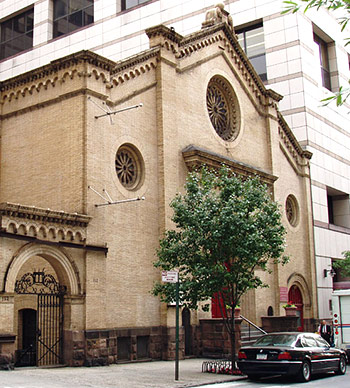
“one of the most refined and intelligent church spaces in New York” ~ The New York Times
Built in 1893 by Josiah Cleveland Cady, architect of the old Metropolitan Opera House and the American Museum of Natural History
|
Office Address:
JUPITER SYMPHONY
155 West 68th Street, Suite 319
New York, NY 10023
admin@jupitersymphony.com
(212) 799-1259
 
Like our Facebook page to see photos, videos,
concert information and the latest news
Jupiter in the News
ConcertoNet
“knocked the socks off this listener...It was wondrous chamber music. And the three artists gave it the deserving excitement, volition and imagination.”
Harry Rolnick, ConcertoNet more...

“the performers were top notch”
“The homey church where these concerts take place, nestled on West 66th Street in the shadow of Lincoln Center, is an intimate and acoustically vibrant place for chamber music.”
Anthony Tommasini, The New York Times more...
Strad Magazine
“A finely forthright, fluent and expressive account of Haydn's Divertimento in E-flat major opened this programme of miscellaneous chamber music in a series known for adventurous programming.”
Dennis Rooney, Strad Magazine more...
ConcertoNet
“Mr.
Nygaard’s cadenza flowed down Mozart lanes and paths, each with
beautiful backgrounds. And at the very end, Mr. Nygaard brought forth
that martial major theme, like an unexpected gift.”
Harry Rolnick, ConcertoNet more...

“...the group’s efforts proved illuminating ...Brown played a
lovely, subtly virtuosic cadenza for Mozart’s Piano Concerto No. 24 by
Jens Nygaard, the ensemble’s founder, who died in 2001, but whose
fascination with rarities continues to drive its programming”
Allan Kozinn, The New York Times more...
|
As promised, here are the videos of John Field’s Divertissement No. 1 and Sir Hamilton Harty’s Piano Quintet. Fortuitously, our Jupiter musicians had the good sense to record the rehearsal in an impromptu decision, literally minutes before pressing the record button. Pianist Mackenzie Melemed (replacing Roman Rabinovich at the last minute) learned the music in 2 days! Bravo to him.
Both works are Irish rarities that were scheduled for the March 16 performances which had to be canceled because of the coronavirus epidemic. Even though the entire program could not be recorded because of technical issues, we are pleased to be able to share with you the 2 musical gems. Enjoy.
John FIELD Divertissement No. 1 H. 13
~ simply delicious piano quintet, alternately titled Rondeau Pastoral and better known in its version for solo piano, Twelve O’clock Rondo, on account of the 12 “chimes” at the end ~ by the creator of the Nocturne, which had a major influence on Chopin
We thank the University of Illinois (Champaign) for a copy of the Divertissement music.
Mackenzie Melemed piano
Abigel Kralik violin
Dechopol Kowintaweewat violin
Sarah Sung viola
Christine Lamprea cello
Sir Hamilton HARTY Piano Quintet in F Major Op. 12
~ in a lyrical Romantic idiom, with a distinct, breezy Irish-salted voice
Andrew Clements of the Guardian proclaimed the beautiful Quintet “a real discovery: a big, bold statement full of striking melodic ideas and intriguing harmonic shifts, which adds Brahms and Dvořák into Harty’s stylistic mix, together with Tchaikovsky in some passages.” There’s folk music charm as well, reminiscent of Percy Grainger—notably in the Scherzo (Vivace) with its folksy quirks and nonchalance, and the winding, pentatonic melody in the Lento.
Our gratitude to the Queen’s University Library in Belfast, Northern Ireland, for a copy of the autograph manuscript of the music. Much thanks, too, to Connor Brown for speedily creating a printed score and parts from Harty’s manuscript.
Mackenzie Melemed piano
Abigel Kralik violin
Dechopol Kowintaweewat violin
Sarah Sun viola
Christine Lamprea cello
I Allegro 0:00
II Vivace 10:43
III Lento 14:44
IV Allegro con brio 23:59
|
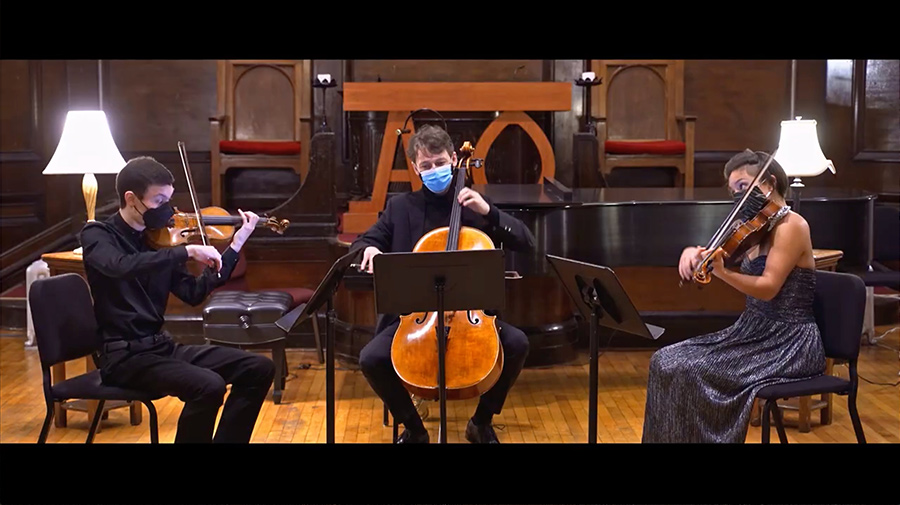
Oliver Neubauer violin, Mihai Marica cello, Zoe Martin-Doike viola
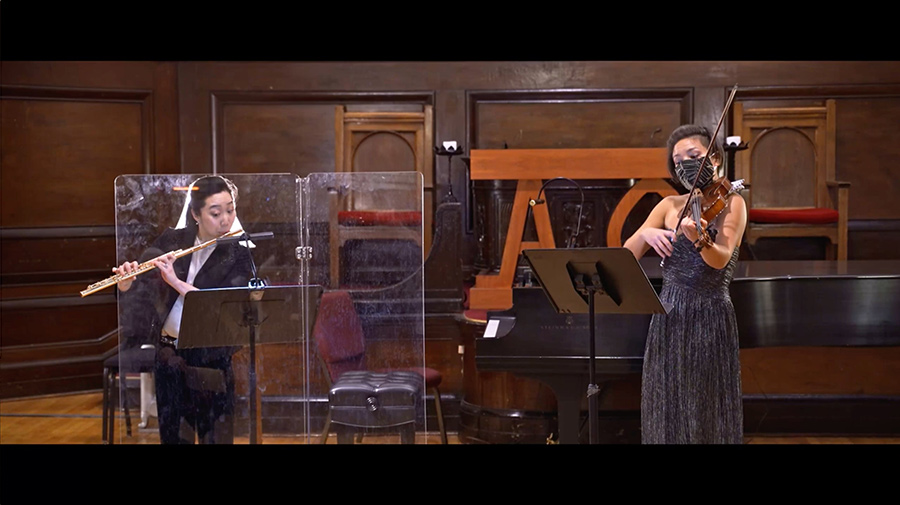
Sooyun Kim flute, Zoe Martin-Doike viola
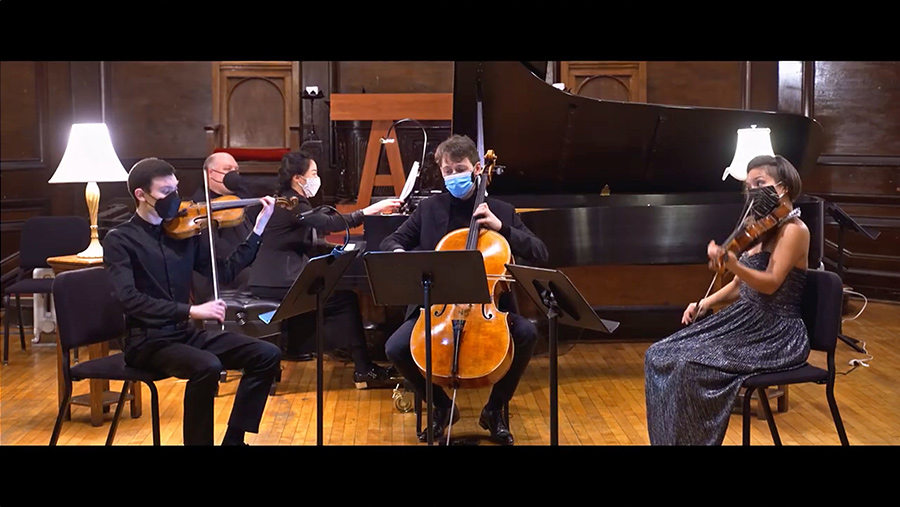
Oliver Neubauer violin, Janice Carissa piano
Mihai Marica cello, Zoe Martin-Doike viola
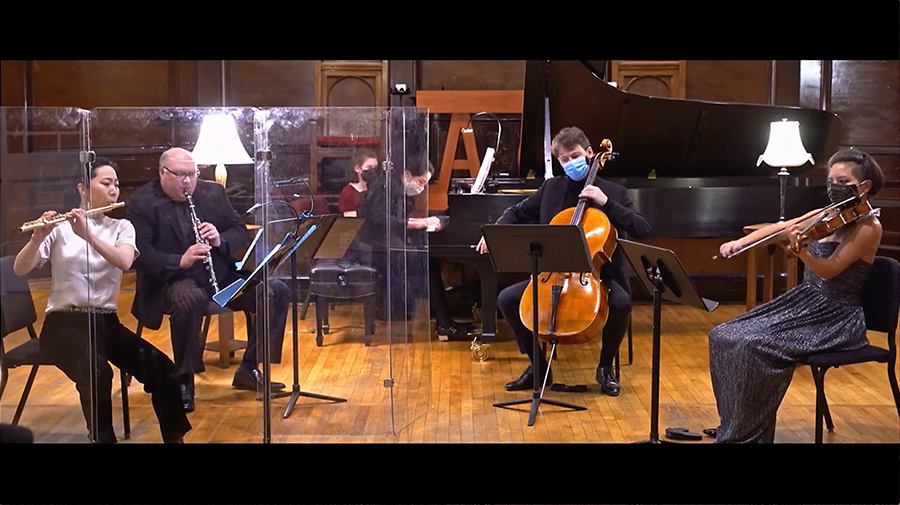
Sooyun Kim flute, Vadim Lando clarinet, Janice Carissa piano
Mihai Marica cello, Zoe Martin-Doike viola
|
Video Viewing ~ Classical Treats
February 8, 2021 Jupiter Concert
Greetings! Three months ago, our musicians brought warmth and joy with their wonderful music making on a cold, winter’s day with Classical Treats. The viewing is offered for $25, and we hope to cover the costs of production. Thanks so much for viewing the video of this concert, and for supporting Jupiter with gifts as well! MeiYing
View the video for $25
You will be automatically directed to the video page once payment is made. If not, click on the “return to merchant” link after checkout. Please go through the checkout process only once and do not use the back button or reload the page while making the purchase. If there are any problems, contact jupiternews@jupitersymphony.com.
Viewers comments of previous videos:
“Oh I thoroughly enjoyed the concert. Good to see Maxim and his dad. Familiar faces to me. I enjoyed the notes about the players. Till the next time...”
“Great playing and really nice camera work. Probably better than being there!”
“We so enjoyed the concert. The pianist was outstanding as was the musical selection.”
“It was wonderful. Thank you.”
♦ ♦ ♦
Musicians
Janice Carissa piano
Young Scholar of the Lang Lang Foundation, recipient of the 2018 Salon de Virtuosi Grant, winner of the 2014 piano competition at the Aspen Festival, and a top prizewinner of the IBLA Foundation’s 2006 piano competition (at age 8)
Oliver Neubauer violin
Recipient of the Gold Award at the 2018 National YoungArts Competition and winner of the 2017 Young Musicians Competition at the Chamber Music Society of Lincoln Center
Zoë Martin-Doike viola
Member of the Metropolitan Opera Orchestra, top prizewinner of the Primrose and Lenox competitions on viola and violin, respectively and founding violinist of the Aizuri Quartet
Mihai Marica cello
Winner of the Irving Klein, Viña del Mar, Salon de Virtuosi and Dotzauer competitions ~ “Mihai is a brilliant cellist and interpreter of music. His playing is spellbinding.” Mitchell Sardou Klein
Sooyun Kim flute
Winner of the Georg Solti Foundation Career Grant and a top prize at the ARD flute competition, she has been praised for her “vivid tone colors” by the Oregonian and as a “rare virtuoso of the flute” by Libération
Vadim Lando clarinet
Winner of the CMC Canada, Yale and Stonybrook competitions ~ “consistently
distinguished...vibrant, precise, virtuosic playing” The New York Times
♦ ♦ ♦
Program
HAYDN Sonata No. 1 in G Major Hob XVI:40 ▪ 1784
~ sophisticated and subtly wrought, the Sonata is from a set of 3, arranged for string trio from the original for keyboard and published by Johann André in 1790
The sonatas were written for Princess Marie, the new bride of Prince Nicholas Esterházy, grandson of Haydn’s employer, Prince Nicholas I. Cramer’s Magazin der Musik, in its review in 1785, observed that they were “more difficult to perform than one initially believes. They demand the utmost precision, and much delicacy in performance.” In 2 contrasting movements, the pastoral Allegretto innocente is followed by a gleeful zany romp.
Conradin KREUTZER Quintet in A Major ▪ between 1810 and 1820
~ in the late Classical–early Romantic style, the charming Quintet is written for the unusual combination of piano, flute, clarinet, viola, and cello with the piano as primus inter pares, first among equals—each movement a winner bearing a variety of melodic gifts and revealing a lively feeling for rhythm and color
Born in Messkirch to a respected Swabian burgher, Kreutzer (1780–1849) is considered a minor master of the Biedermeier epoch. He studied law in Freiburg before turning entirely to music after his father died in 1800. In 1804 he went to Vienna, where he met Haydn and probably studied with Albrechtsberger, one of Beethoven’s teachers. His active career included tours in Europe and several posts in Vienna, Stuttgart, Cologne, and other German cities, all the while composing numerous operas. Some of his music is not entirely forgotten—his settings for male chorus to Ludwig Uhland’s poems long remained popular with German and Austrian choirs; Das Nachtlager in Granada used to be revived occasionally in Germany; and his score for Der Verschwender continues to be performed in Austria.
Franz Anton HOFFMEISTER Duo Concertante No. 1 in G Major ▪ [1790]
flute and viola
1st movement ~ Allegro
~ by Mozart’s friend and his principal publisher
MOZART Piano Quartet No. 2 in Eb Major K. 493 ▪ 1786
~ a flawless masterpiece of utmost lightness and charm, with heavenly melodies
Mozart was under contract with the publisher Franz Anton Hoffmeister to write 3 piano quartets, a virtually new genre of his own invention. When the first (K. 478 in G minor) did not sell because of its difficulty for amateurs, Mozart was released from his obligation. Nine months later, which was two months after the completion of Le Nozze di Figaro, the second piano quartet (K. 493 in Eb Major) was published by Artaria. A little easier than the first, Alfred Einstein viewed it as “bright in color, but iridescent, with hints of darker shades.”
♦ ♦ ♦
Harry Munz audio engineer
Marc Basch videographer
For more about the musicians: guest artists • players
For further notes on the music: calendar |
|
